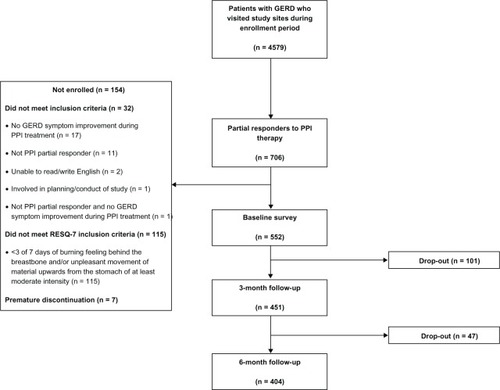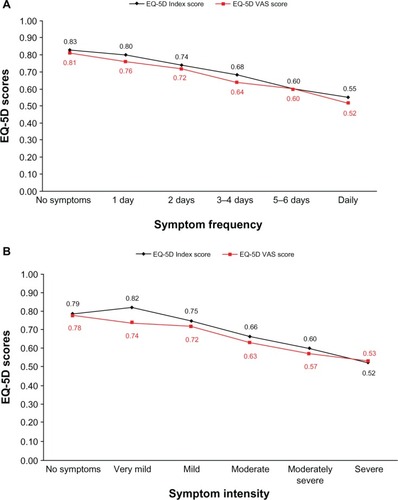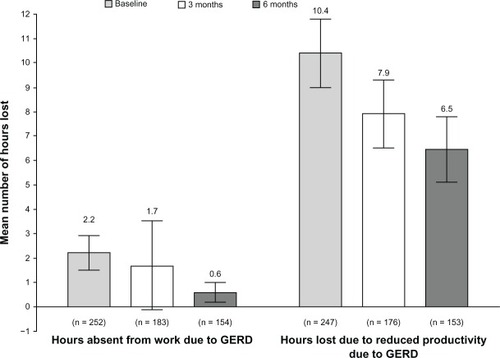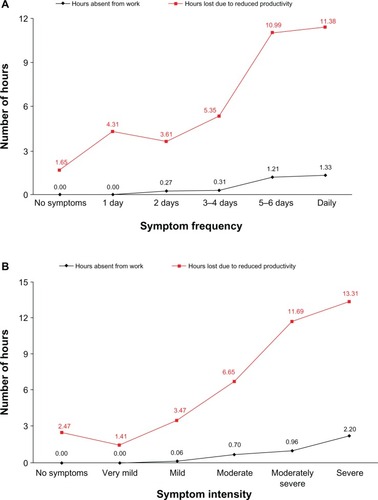Figures & data
Figure 1 Flow of patients through the REMAIN US study.

Table 1 Summary of patients’ clinical characteristics at baseline
Figure 2 Mean EQ-5D Index and VAS scores by symptom frequency (A) and intensity (B) of RESQ-7 heartburn domain symptoms (using the symptom with the highest frequency) at 6 months’ follow-up.
Abbreviations: EQ-5D, European Quality of Life-5 Dimensions; VAS, visual analog scale; RESQ-7, Reflux Symptom Questionnaire 7-day.

Table 2 Mean (± SD) SF-36v2, EQ-5D Index, and VAS scores at baseline and 6 months among evaluable patients (n = 550)
Figure 3 Results from the WPAI-GERD.
Abbreviations: WPAI-GERD, Work Productivity and Activity Impairment questionnaire for patients with Gastroesophageal Reflux Disease; GERD, gastroesophageal reflux disease.

Figure 4 Mean number of hours absent from work and number of hours lost due to reduced work productivity by symptom frequency (A) and intensity (B) of RESQ-7 heartburn domain symptoms (using the symptom with the highest frequency) at 6 months’ follow-up.
Abbreviation: RESQ-7, Reflux Symptom Questionnaire 7-day.

Table 3 Mean (± SD) number of health care visits (excluding screening visit) among all patients across the 12-month study period
Table 4 Cost analysis
Table S1 Unit cost data for medical consultations, hospitalizations, tests, procedures, and surgeries